The BitFenix Whisper M 450W & 850W PSU Review
by E. Fylladitakis on February 15, 2017 9:00 AM EST- Posted in
- Cases/Cooling/PSUs
- PSUs
- 80Plus Gold
- bitfenix
- Modular
External Appearance
Physically, the 450W version of the Whisper M is almost entirely identical to the 850W version. The only real way to tell the two units apart is to look at the large stickers with their electrical specification at the top of the chassis or know the cable layout variations in the series. Both units are built in a standard-size ATX chassis that is 160 mm long and sprayed with a matte black paint. The matte paint is very well applied but it is easy to scratch and heavily prone to fingermarks.
A square opening at the bottom of the chassis reveals the cooling fan and is covered with a finger guard that uses a parallel grating. The only round part of the metallic design is the company’s badge over the fan’s engine. Black/Yellow stickers decorate both sides of the PSUs, without any mention of any figures or model numbers. Only the large stickers at the top of the chassis has the full electrical specifications of the PSU printed on it.
The front side of the PSU is littered with the connectors for the many modular cables. Here the 850W version has two connectors more, for the two additional PCI Express cables that it has.
Internal Design
As expected, considering the large difference in power that the two PSUs have, their first major difference is the 135 mm cooling fan. Both fans are supplied by Martech, a rarely-seen Chinese manufacturer, and both are of the same series. The 450W version comes with the DF1352512SEMN and the 850W version employs the DF1352512SEHN, with the main difference being their maximum rotational speed - 1500 RPM and 1800 RPM respectively. Both are using “Hydro” bearing engines, which are advanced forms of regular sleeve bearings.
The OEM behind the Whisper M units is Channel-Well Technology (CWT), a company that we are very familiar with. However, this is a design that we have never encountered prior to this date. First and foremost, it is worthwhile to mention that both PSUs are based on the same platform, meaning that all of the different versions of Whisper M should all be on this platform (it would be rare for a mid-powered unit to differ). A quick glance reveals that there are no great differences between the two PSUs other that the sizing of some of the components. We were actually bewildered to see that the 850W version is using the same heatsinks as the 450W version does, despite having nearly twice the power output, hinting that the employment of the more powerful fan was more of a necessity and less of a precaution.
The internal design of the Whisper M units is very clean, with minimal use of wires at all. The secondary board with the modular cable connectors is soldered directly onto the main board, hinting that CWT has designed this particular platform for modular-only PSUs. We can see that both units are sharing the same filtering stage, with four Y capacitors, two X capacitors, and two filtering inductors. The heatsink of the input conversion bridge is identical, but the bridge itself is (vastly) different between the two units. Specifically, the 450W version employs a GBU606 that is capable of 6 Amperes, whereas the 850W version is making use of an oversized GBU15L06, a bridge capable of 15 Amperes.
BitFenix Whisper M 450W - Internal View
Another major component difference between the two units are the PFC components, with the 450W unit using a Nichicon 330μF capacitor, whereas the 850W version has a Nippon Chemi-Con 680μF capacitor installed. The APFC inductor is also notably larger and the active components are significantly more powerful. Two transistors form a relatively simple half-bridge primary inversion side with its efficiency boosted by an LLC resonant converter. The four secondary side conversion stage transistors that generate the 12V output are attached to the underside of the main PCB and cooled by the silvery heatsinks next to the main transformer. The 3.3V and 5V outputs are generated by DC-to-DC circuits found on the small vertical PCB.
BitFenix Whisper M 850W - Internal View
It is worthwhile to notice that both units are using filtering capacitors of the same type and size at the secondary side for filtering. Nippon Chemi-Con supplies the electrolytics and most solid-state capacitors, with the rest of the solid-state capacitors coming from Nichicon.


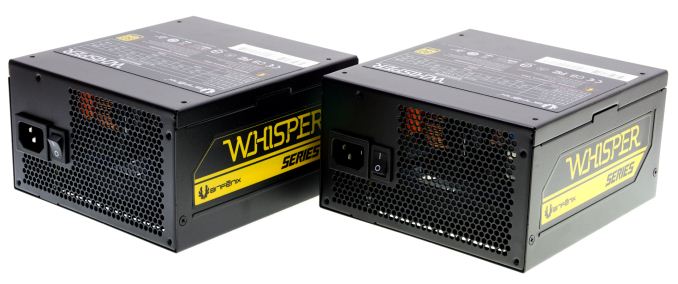
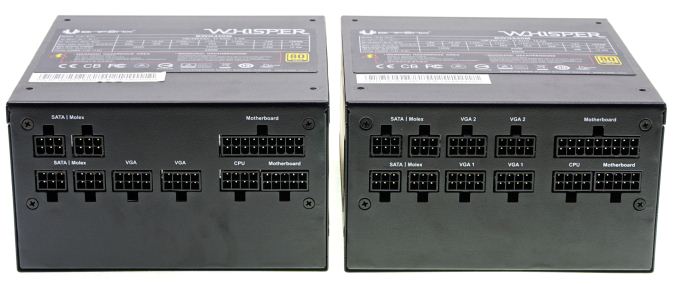
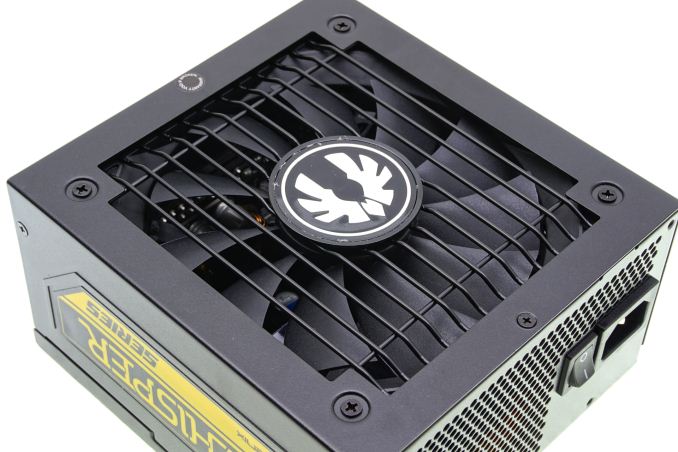
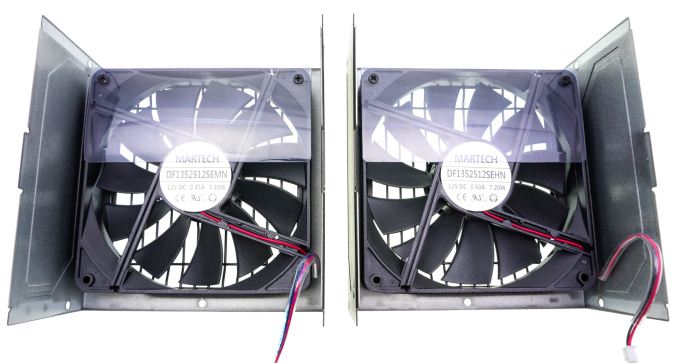
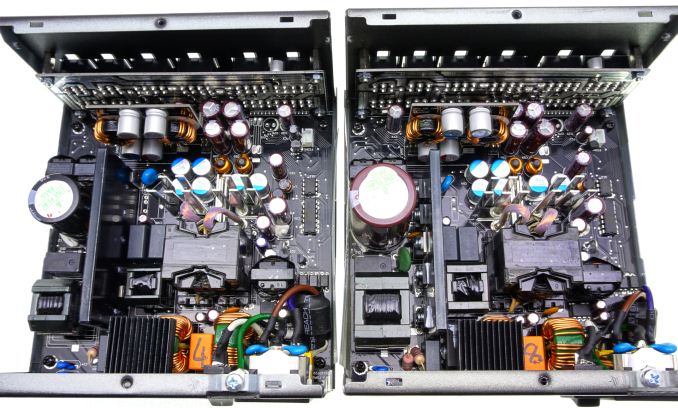
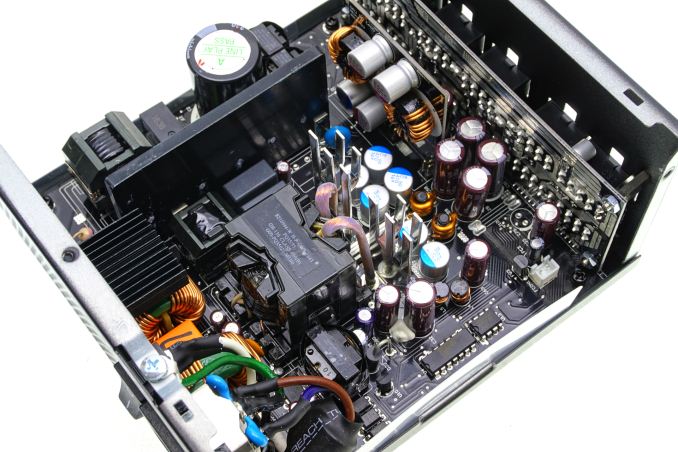
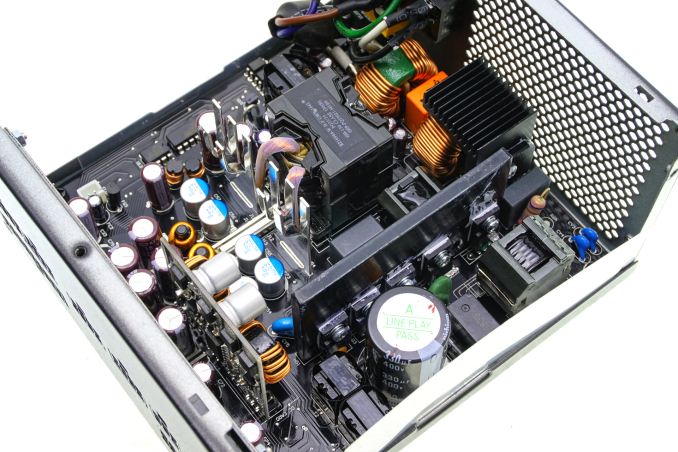

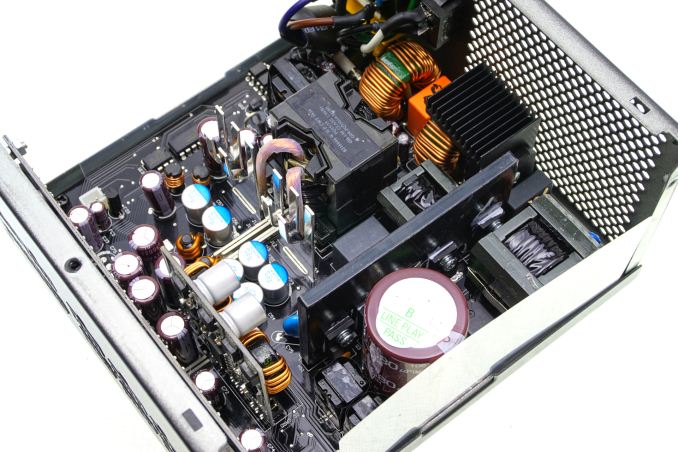








15 Comments
View All Comments
voicequal - Thursday, February 16, 2017 - link
I appreciated the side-by-side review of the two models - interesting to discover the changes that go into engineering a high capacity PSU. This PSU looks great inside and out. If it wasn't for the safety hazard, this would look great with an open case.Samus - Saturday, February 18, 2017 - link
Their cases get so much right and so much wrong. It's nice to see their PSU's get so much right and nothing wrong.Bearmann - Wednesday, February 15, 2017 - link
I think that many of the EVGA units also use capacitors in the cables.refillable - Wednesday, March 1, 2017 - link
Great addition, especially the 450W. Sub $70, great build quality, ripple suppression, efficiency and voltage regulation. The 850W might have a hard time competing with stronger players like Evga and Seasonic though. The 450W looks great for an affordable modern build.shreduhsoreus - Friday, October 27, 2017 - link
That 450W model is getting 80+ Platinum level of efficiency! The 850W model isn't too far off from it either.